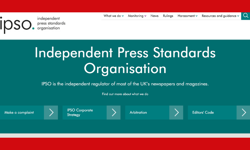You’ve probably heard the threat that pervades the marketing industry right now: if you aren’t using mobile, you’re already too late. Although 44% of the UK population has a smartphone according to comScore, this is perhaps a little alarmist, and with Google estimating the majority of businesses don’t have mobile sites yet, there is ample opportunity to get stuck in… Unless you are a publisher. If you are a publisher, the statement rings true. Sorry.
Hyperpremium inventory
There are many first mover advantages to being a publisher in the mobile space with one of the biggest being premium priced inventory. A handful of publishers like the Telegraph, the Guardian and the FT are delivering extremely high quality mobile content and products to a hungry mobile audience. Better mobile experiences generate higher repeat visits, dwell time and engagement.
Right now, mobile advertising is particularly exciting and feels new, and with audiences growing and spending more time on mobile, brands are keen to secure a successful presence. Coupled with an increasing amount of data and research proving mobile advertising’s effectiveness and, suddenly, there’s strong demand for the best performing inventory. Highly polished mobile sites do deliver better user experiences, amplifying the effectiveness of advertising on them.
Throughout 2011, the amount of inventory has undeniably increased, so there is no shortage. However, the leading publishers with mobile products are in a minority, shining the spotlight on them. High demand from early adopting brands and more effective results of course create premium inventory which can be used to pay for the investment in the mobile product. As more sites up their game, publishers slow to the market could miss this bonanza.
A rapidly expanding market
Mobile advertising overall is an established but relatively small market right now, at £83 million. Yet, in terms of growth, it is outpacing the rest of the market, growing an astounding 116% in 2010 (IAB / PwC AdSpend 2010). In fact, First Partner predicts that mobile advertising in the UK will reach £1 billion as soon as 2015. While this may sound ambitious, I can see the market getting close to this figure.
It’s often said that mobile at the moment is like the internet five or six years ago. In some respects, I can understand this analogy but I have to disagree. It is at the start of a growth boom that mirrors the challenges and opportunities of PC internet. At the same time, mobile has a huge advantage because it builds on existing technology with a multi-billion dollar industry to support and make sense of its growth. Mobile is the privileged child of a well-educated, confident parent with a solid base to grow from.
The IAB expects the total PC online advertising industry to be a £4.5 billion medium by the end of 2011. It was £2.26 billion for H1 2011 alone, growing by 13.5% on a like-for-like basis on the previous year (IAB / PwC Adspend H1 2011). Considering mobile is a portable extension of the same audience, as the audience continues to grow, it is safe to assume the advertising pounds will grow quickly to catch up.
Top 10 UK Mobile Sites
1. Google Sites
(12.6 million visitors)
2. Facebook
(9.5 million visitors)
3. BBC Sites
(5.2 million visitors)
4. O2
(4.2 million visitors)
5. Yahoo!
(4.2 million visitors)
6. Wikipedia
(3.7 million visitors)
7. Orange
(3.6 million visitors)
8. AOL
(2.9 million visitors)
9. Microsoft
(2.9 million visitors)
10. Amazon
(2.4 million visitors)
Source: GSMA 2011
An already mainstream audience
In the UK, there are almost 24 million mobile internet users (GSMA 2011). Users are accessing the mobile internet an average of 31.5 times per month, spending an average of 10 minutes 20 seconds per visit. In fact, a quarter of total audience time spent online is now spent on mobile devices according to comScore and UKOM.
This audience is clearly too mainstream to be ignored, to the point where a publisher that doesn’t have a serious mobile product could be damaging their brand rather than simply missing out on revenue. If you look at the list of top mobile sites (above), you can see clearly that the most popular sites are those with strong, well thought-out mobile offerings.
To drill down a little further into publisher audiences, the graph (source: comScore Mobilens 2011) highlights just one category of content, entertainment, and the growth it has seen over the last year alone.
Looking at news sites specifically using GSMA, the most popular sites on mobile include the primary news brands both offline and on regular PC sites. In August 2011, top of the list were the BBC (4.8m), Mail Online (1.2m) and the Guardian (1.0m). Other publishers in the top 10 are the Telegraph (0.8m), the Sun (0.7m) and Sky News (0.4m).
There is high demand for news and entertainment on the move and the known publisher brands in these sectors have a strong advantage for building mobile audiences. More information on mobile audiences can be obtained from the likes of GSMA, comScore, media owners themselves and, of course, the IAB.
Challenges
As mobile continues to evolve and grow, a number of challenges have been rearing their heads which we will all recognise from online. To name a few of them:
* Making sense of social media – mobile and the likes of Twitter, Facebook, Foursquare etc are a natural fit, evidenced by consumer use of these services. For publishers, understanding how these sites can benefit their own business and how to use them continues to be a learning curve for the industry.
* Mobile search – the functionality of search on mobile is incredibly similar to online which makes it easy to dive right in. However, the consumer use and behaviour is very different, with people leaning more toward local services, click to call links and other short cuts. How do publishers fit into this different, on-the-move activity?
* Ad serving and discrepancies – third party ad serving was critical in the growth of online display advertising and the same is true for mobile. Agencies have stated to the IAB that discrepancies are a significant barrier to increasing mobile ad spend. Removing them will provide reassurance on reporting and help with scale. There are increased technical challenges around ad serving on mobile phones but the industry is quickly overcoming them.
* Integration – mobile’s ‘always with you’ nature lends itself beautifully to integration with all forms of other media, whether that’s directly through the likes of QR codes or clever technology such as Yell’s Yellovator advert which uses a smartphone to control an online game within a standard MPU unit. However, on top of this clear creative integration, understanding mobile’s role and impact within a wider media campaign is much tougher. The industry is starting to make sense of this using media mix and econometric modelling, as well as looking at mobile’s ability to drive offline sales. If publishers can help prove mobile advertising’s strengths in an integrated mix, it will significantly help to convince agencies and brands of its use.
The future for publishers
Publishers are quickly getting their heads around mobile and they undoubtedly recognise its importance. The biggest question for mobile is in fact not just about mobile, but how to publish content across multiple screens and how best to display it across each.
Does content on a desktop PC fit well on mobile and tablets? Do traditional publishers also have a role to play on connected TVs? Should video and image content play a stronger role on some devices and text on others? Questions I’m sure publishers are already discussing internally.
Importantly, the next crucial step for all publishers in 2012 in regard to mobile is for publishers to continue helping agencies and brands to make sense of this new multi-screen world that we live in.
A couple of final thoughts...
“Predictions that mobile advertising will be a £1bn business in 2015 don’t come as too much of a surprise to me. From my daily conversations with brands and agencies, most know they have to take mobile seriously - and many already are. Big brands like Tesco have already made mobile a central part of their business, and are reaping the rewards.”
Alex Kozloff, Senior Mobile Manager
The challenge of campaign discrepancies
“There are many different causes of discrepancies in mobile – some of these will be the same as those in online display, ie. trafficking errors or Cache busting/timestamp faults. The main difference is that most mobile devices will connect regularly through mobile networks (GPRS, 3G etc) as well as Wi-Fi connections. Mobile network connections are likely to be the largest cause of discrepancies on mobile because the connection depends upon the network coverage and works at slower speeds. This causes greater issues with latency and file size, not to mention loss of connection. All of these will adversely affect discrepancies between counting parties.”
Amit Kotecha, Mobile & Networks Manager, IAB










